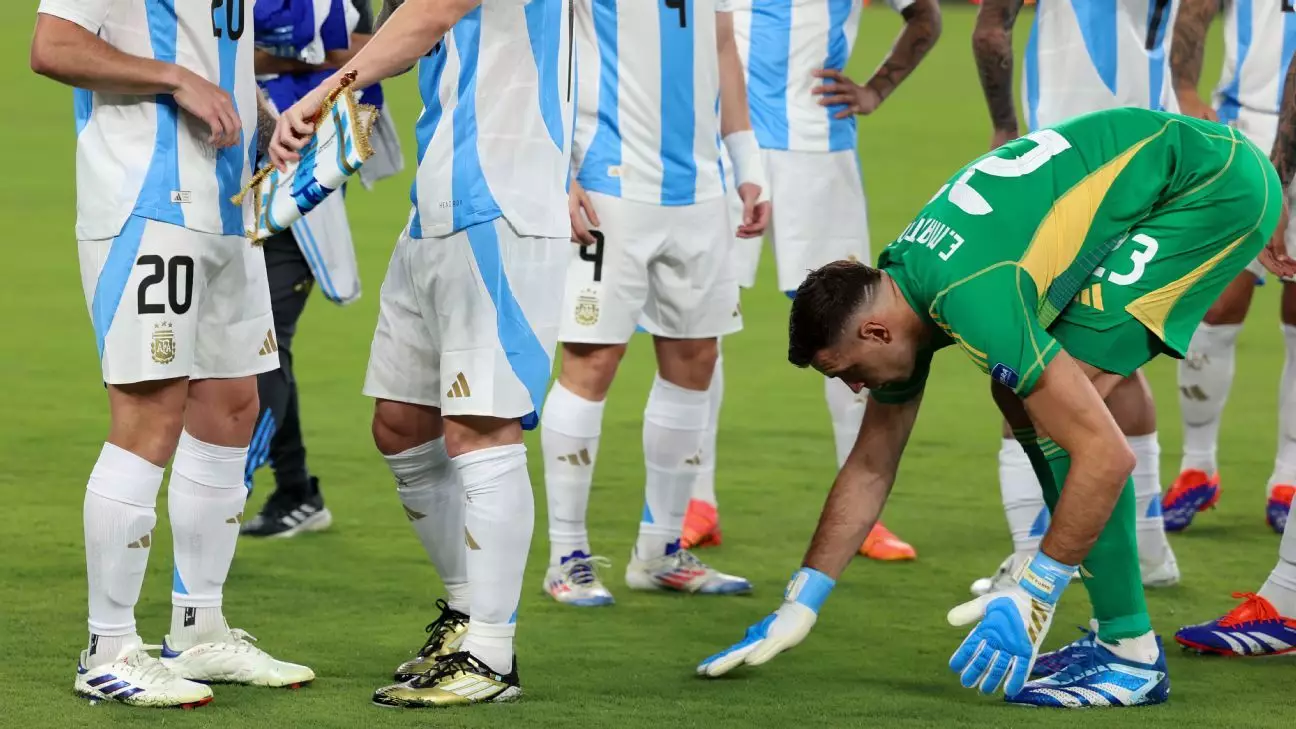The excitement surrounding the upcoming 2026 FIFA World Cup, co-hosted by the United States, Canada, and Mexico, draws closer. Yet, a shadow looms over the anticipation due to concerns witnessed during last year’s Copa América, which was hosted in the U.S. Players and coaches voiced their frustrations over the poor quality of playing surfaces that marked the tournament. Terms like “disastrous” were echoed, highlighting the crucial role that a proper pitch plays in a sport that thrives on precision and fluidity. With FIFA’s plan to use the 2025 Club World Cup as a testing ground for future improvements, both supporters and critics alike wonder if viable solutions are on the horizon.
The Pitch Dilemma: Grassy Expectations for Stadiums
The crux of the issue appears to lie in the venues themselves. Many of the stadiums used for both Copa América and the upcoming World Cup are designed primarily for American football. As such, they often feature artificial turf, which is great for quick turnarounds in NFL games but terrible for soccer. An attempt made during Copa América to overlay these stadiums with natural grass revealed significant problems. The grass was often rolled out just days before matches, leading to inconsistent surfaces rife with seams and patches where players struggled to find stable footing.
One can’t underscore enough how detrimental poor pitch conditions can be for players’ performance and safety. Take the view held by Argentina goalkeeper Emiliano Martínez, who described the playing surface at Mercedes-Benz Stadium as “bumpy” and “disastrous.” Such opinions aren’t just anecdotal; they’re indicative of a deeply rooted problem that could resurface if not addressed comprehensively ahead of the World Cup.
Identifying Solutions: A Pursuit of Perfection
In the wake of the complaints during Copa América, FIFA is keen on a different approach for the Club World Cup and World Cup next year. The organization has begun exploring innovative methods to bring quality natural grass to venues that have previously relied on synthetic surfaces. FIFA’s senior pitch manager, Alan Ferguson, is spearheading this endeavor, stating the importance of sidestepping the missteps seen in prior tournaments.
Perhaps the most promising of FIFA’s new strategies is the introduction of a unique hybrid pitch, combining natural and artificial grass. This innovative method aims to create a more consistent and reliable playing surface, allowing the natural grass to thrive without the complications of artificial turf. Fans can rest assured that FIFA is fully aware of the gravity of maintaining a pristine playing field, as failing to do so may lead to a significant black mark on the tournament’s history.
Skepticism and Optimism: The Balancing Act
While it’s easy to be cynical given the recent past, there’s also an air of cautious optimism surrounding FIFA’s new plans. Fans, players, and analysts all have a vested interest in the beautiful game and genuinely want to see it played to its highest standards. The stakes are incredibly high; major clubs like Manchester City and Real Madrid are set to compete in the Club World Cup, and the global spotlight will shine brightest on these iconic fixtures.
However, one question must be posed: can FIFA truly overcome the logistical nightmares that come with hosting such a grand event across multiple venues? The U.S. is faced with a hallmark challenge, and while it has extensive experience hosting large sports events, soccer presents an entirely different dimension. The looming climate adaptations for varying venues will require unprecedented foresight and meticulous planning.
A New Chapter for Soccer in the U.S.
The upcoming tournaments represent a monumental chance for the United States to redefine its commitment to soccer at both grassroots and elite levels. With the integration of advanced pitching technology and infrastructure, there lies potential for lasting improvements that transcend just these tournaments. A successful execution of pitches that meet professional standards could open doors for more high-caliber soccer events in the future. Moreover, should FIFA accomplish its goal to deliver state-of-the-art field conditions, it will not only enhance the experience for players but could elevate overall interest in soccer across a diverse U.S. audience.
While skepticism remains inevitable, the commitment to optimizing grass installation and management could lead to a revolutionary shift in how soccer is presented, experienced, and cherished in North America. With passionate players eager to show their talents and a continue inflated expectation of the game, the countdown to the World Cup could, indeed, become a thrilling chapter for soccer and its growing legacy in the United States.

